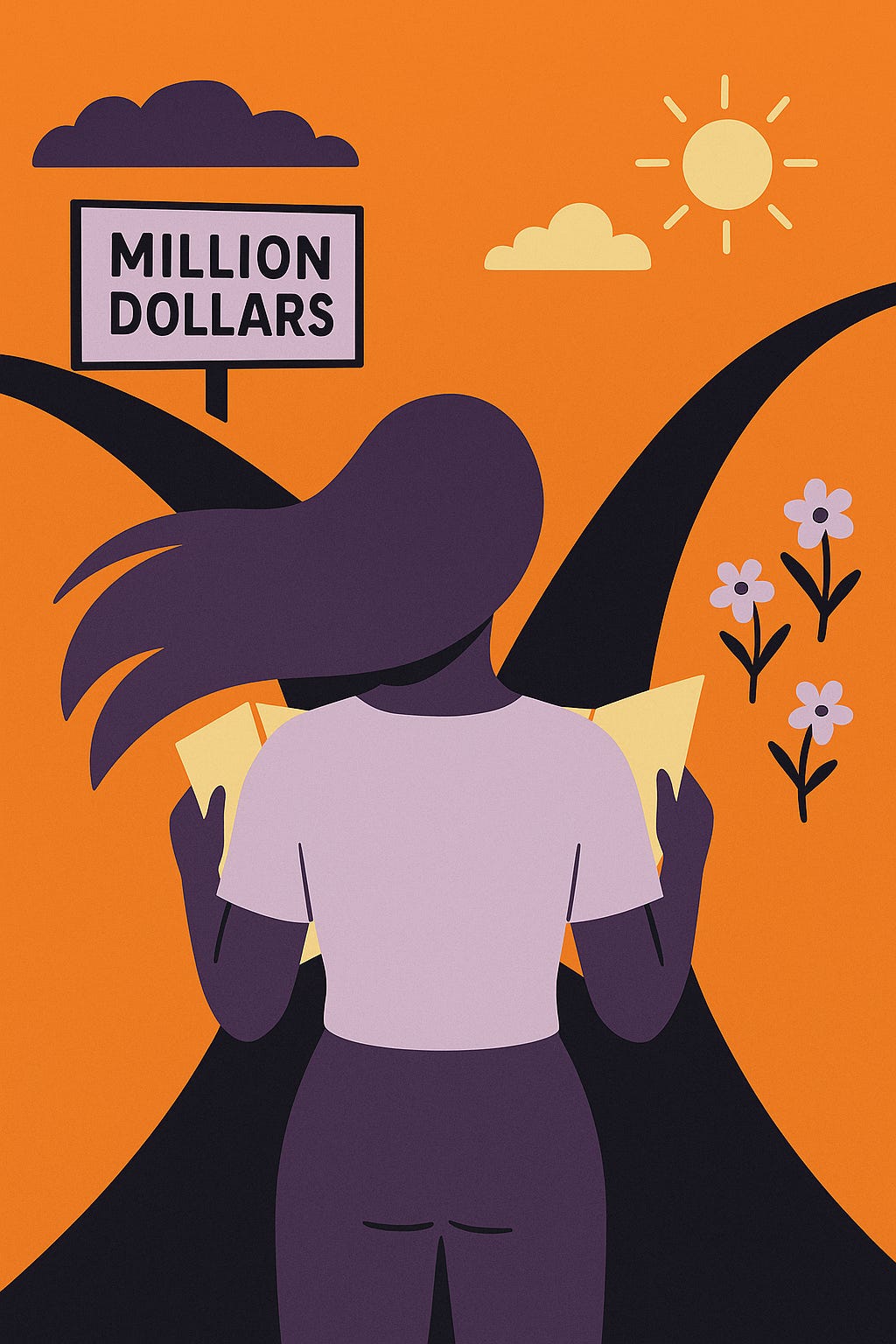Would you turn down a million dollars? I did.
The math made sense. My gut didn’t. Here’s why I walked away—and the 3-part decision matrix I use for every big call.
The Million-Dollar Offer I Walked Away From
It wasn’t the promise I doubted—it was the people making it.
In business, a million-dollar promise means nothing if the people making it do n’t share your values. Choose your guides as carefully as your goals.
When a Guarantee Sounds Too Good to Refuse
Last week, I turned down a million dollars.
Not a cheque I could wave in the air but the kind of million that arrives wrapped in spreadsheets, marketing funnels, and two years of “proven results.”
The offer came from a business coaching company I’d been researching. Like everyone else in their lane, they invited me to “hop on a free call.” The friendly sales guy wanted to hear all about my dreams, my vision for my law firm, my big audacious goals. And then, they’d hit me with the pitch.
But this one was different.
They had stats. Jaw-dropping stats. In the past two years, the average business in their program increased revenue by $1.2 million. They even had a guarantee: if you don’t increase your revenue by at least $1 million, we’ll work for free until you do.
How do you say no to that?
Falling Down the Research Rabbit Hole
I did my homework. I studied the founder’s background. Researched the main presenters at their conferences. Binged their podcasts. Watched hours of past events on YouTube.
When you spend that much time with one company, you start to hear more than their mission. You hear their values. You see their culture.
Yes, they were selling monetary success—and they had the receipts to back it up. But they were also selling something else: Machismo. Misogyny. A tolerance for questionable shortcuts at the client’s expense. An inner circle that felt more like a cult than a community.
It wasn’t my world. In fact, it was the exact opposite of the world I’m trying to build inside my own firm.
The Culture I Couldn’t Unsee
Still, I tried to convince myself:
I can ignore the toxicity and focus on the lessons.
I could be a positive influence in the room.
Surely not everyone in the program thinks like this…
At the same time, I’d been doing a lot of driving, and journeys were on my mind.
It struck me: there are plenty of people heading where I want to go. But not all of them are getting there the way you’d want to travel.
Some are breaking the rules. Some are driving dangerously. Some are in vehicles I wouldn’t step into.
Math vs. Gut: Who Wins?
When the math says yes but your gut says no, I have no choice.
I chose my gut.
I said no to the program. Not because the promise was bad, but because I didn’t like the people making it.
I’ve Made This Call Before
It reminded me of hiring for our restaurant years ago. We’d interview a dozen servers who could all technically do the job. But not all were naturally warm or kind. Some had the skill without the soul.
And I knew: no matter how good they were on paper, they’d never serve our customers in a way that fit our values.
The 3-P Matrix for Hard Business Decisions
Now, whenever I’m weighing a big decision I run it through this filter:
Promise — Is it the right result?
Process — Will they take me there in a way I’m proud of?
People — Are these the humans I want in my orbit?
If the answer to any of those is “no,” I walk away.
Because no matter how shiny the destination, the journey shapes who you are when you arrive.
💬 Try This with AI
Want to test your own decision through the 3-P Matrix? Here’s a prompt to paste into ChatGPT and work it through:
Act as a trusted business mentor. I’m considering a major investment or partnership.
Ask me three sets of probing questions—one about the promise (the result), one about the process (how they’ll get me there), and one about the people (the humans I’ll be working with).
Don’t let me give vague answers; keep asking follow-up questions until I’m clear on whether each category is a YES or a NO for me.
Once I’ve answered all three, reflect back the risks and benefits you see, and tell me—based on my own answers—whether I should say yes, no, or wait.
If you’ve ever faced a decision like this, you know the real million-dollar question isn’t Can they get me there?
It’s Who will I become if I let them?



